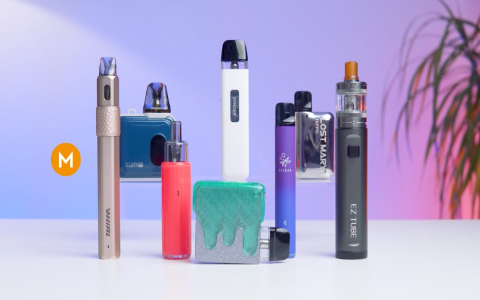Electronic cigarettes without nicotine (often labeled as nicotine-free or 0mg) offer an experience focusing on flavor and the physical act of vaping, devoid of the addictive substance. Here’s a concise overview:
What Are No-Nicotine E-Cigarettes?
These are electronic devices that heat a liquid (e-liquid or vape juice) into an aerosol for inhalation. The defining feature is that this liquid contains zero nicotine.

Core Components of No-Nicotine E-Liquids
- Propylene Glycol (PG): Provides throat sensation, carries flavor effectively.
- Vegetable Glycerin (VG): Produces denser vapor, adds sweetness.
- Flavorings: Wide array of synthetic or natural compounds creating tastes (fruit, dessert, menthol, tobacco, etc.).
- Optional Additives: May include sweeteners, cooling agents (like WS-3, WS-23), or bittering agents.
Common Reasons for Use
- Enjoyment of flavors and cloud production without addiction risk.
- Seeking a replacement for nicotine vaping.
- Perceived alternative to tobacco cigarettes (though not FDA-approved for cessation).
Safety Considerations (Important)
Absence of nicotine does not mean absence of risk.
- Inhalation Risks: Aerosols contain ultrafine particles (potentially irritating to lungs), flavorings whose long-term inhalation effects are unknown, and trace contaminants. Potential respiratory irritation exists.
- Flavoring Concerns: Some flavor compounds have been linked to negative health effects (e.g., diacetyl for “popcorn lung,” though less common now). Long-term safety data is insufficient.
- Other Additives: Substances like cooling agents may carry unknown inhalation risks.
- Device Safety: Risks from device malfunction or battery failure remain.
They are not risk-free alternatives to breathing air.
Regulatory Landscape
Regulations (sales age restrictions, marketing bans, flavor bans in some regions) often apply to all e-cigarettes, regardless of nicotine content, treating them as tobacco products in many jurisdictions.
Alternatives to Smoking or Vaping
For those seeking safer alternatives specifically to quit nicotine, evidence-based options exist:
- Nicotine Replacement Therapy (NRT): Patches, gum, lozenges, inhalers, nasal spray.
- Prescription Medications: Varenicline (Chantix), Bupropion (Zyban).
- Behavioral Support: Counseling, quitlines, support groups.
While no-nicotine vapes eliminate the specific addiction risk of nicotine, they are not endorsed as cessation tools and carry other potential health risks associated with inhaling aerosols.










